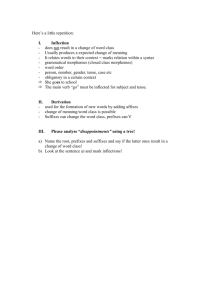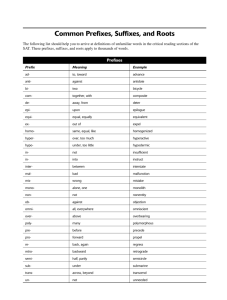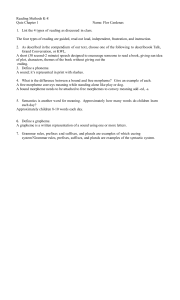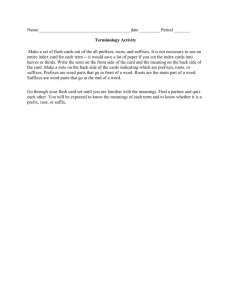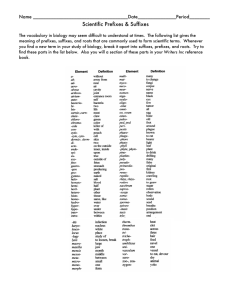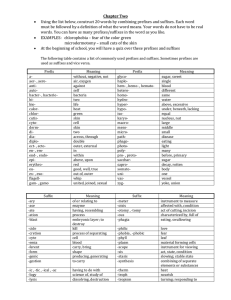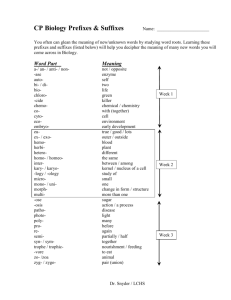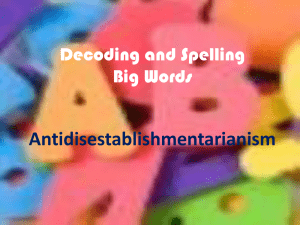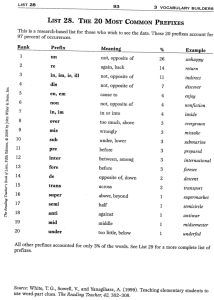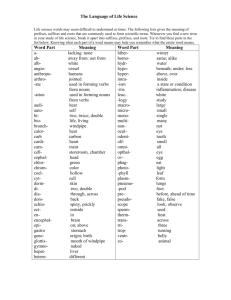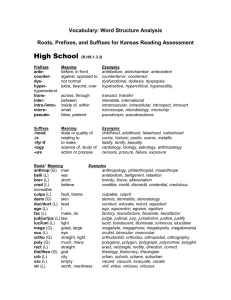Word Study at the Secondary Level
advertisement
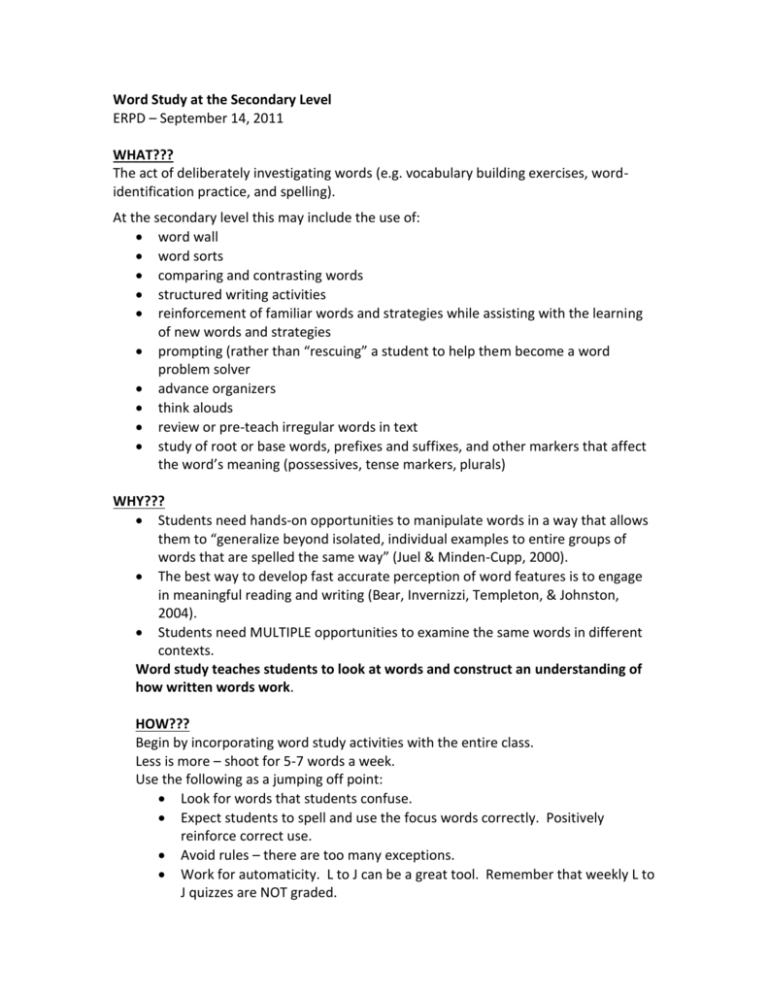
Word Study at the Secondary Level ERPD – September 14, 2011 WHAT??? The act of deliberately investigating words (e.g. vocabulary building exercises, wordidentification practice, and spelling). At the secondary level this may include the use of: word wall word sorts comparing and contrasting words structured writing activities reinforcement of familiar words and strategies while assisting with the learning of new words and strategies prompting (rather than “rescuing” a student to help them become a word problem solver advance organizers think alouds review or pre-teach irregular words in text study of root or base words, prefixes and suffixes, and other markers that affect the word’s meaning (possessives, tense markers, plurals) WHY??? Students need hands-on opportunities to manipulate words in a way that allows them to “generalize beyond isolated, individual examples to entire groups of words that are spelled the same way” (Juel & Minden-Cupp, 2000). The best way to develop fast accurate perception of word features is to engage in meaningful reading and writing (Bear, Invernizzi, Templeton, & Johnston, 2004). Students need MULTIPLE opportunities to examine the same words in different contexts. Word study teaches students to look at words and construct an understanding of how written words work. HOW??? Begin by incorporating word study activities with the entire class. Less is more – shoot for 5-7 words a week. Use the following as a jumping off point: Look for words that students confuse. Expect students to spell and use the focus words correctly. Positively reinforce correct use. Avoid rules – there are too many exceptions. Work for automaticity. L to J can be a great tool. Remember that weekly L to J quizzes are NOT graded. Use meaningful, rigorous texts that allow students to APPLY the words and extend their vocabularies. encourage and model nonlinguistic representations Create a management routine for your class: Word study notebook Word study foldable Word sort routines should be based on needs of the class o similar base/root words o add plurals/change word forms o circle prefixes/suffixes o add prefixes/suffixes o create sentences with 1 or 2 words o sort words into categories A word about WORD WALLS: They’re NOT just for elementary students! Add key words from the course – cluttered walls don’t help students. Word wall should be built over time with shared ownership between teacher and students. Words on the wall should be visible to everyone. Use of the wall MUST be modeled….repeatedly. Students may create a space for “portable word walls” in their binders/notebooks. Teacher attitude toward the word wall will influence student attitude toward the word wall.

